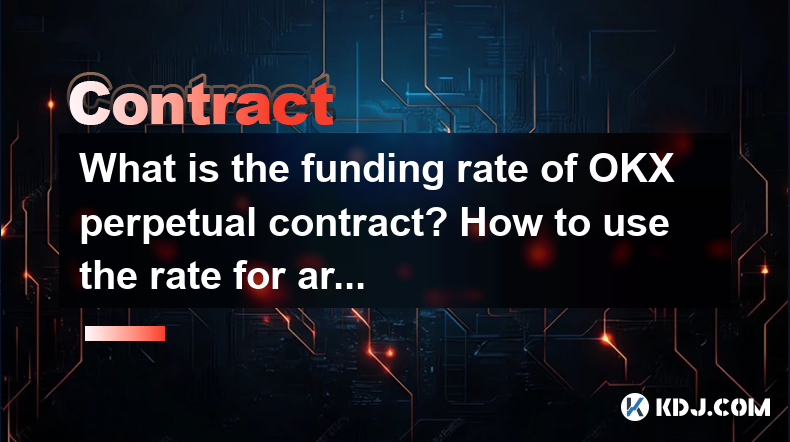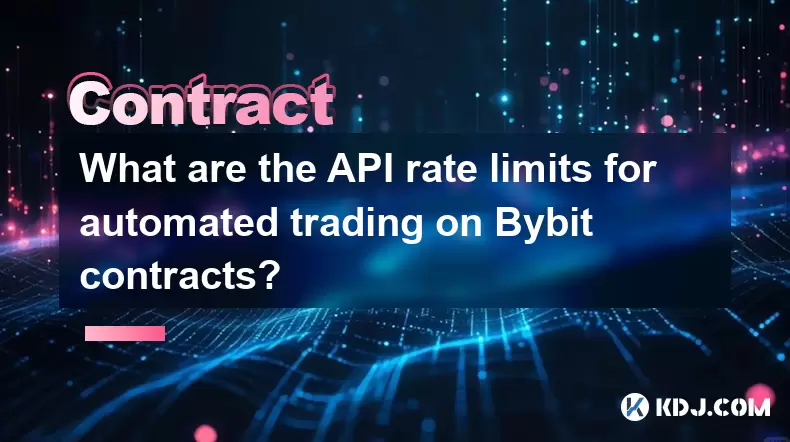-
 Bitcoin
Bitcoin $117500
2.15% -
 Ethereum
Ethereum $3911
6.19% -
 XRP
XRP $3.316
10.79% -
 Tether USDt
Tether USDt $1.000
0.01% -
 BNB
BNB $787.2
2.24% -
 Solana
Solana $175.2
4.15% -
 USDC
USDC $0.9999
0.00% -
 Dogecoin
Dogecoin $0.2225
8.40% -
 TRON
TRON $0.3383
0.28% -
 Cardano
Cardano $0.7868
6.02% -
 Stellar
Stellar $0.4382
9.34% -
 Hyperliquid
Hyperliquid $40.92
7.56% -
 Sui
Sui $3.764
7.63% -
 Chainlink
Chainlink $18.48
10.66% -
 Bitcoin Cash
Bitcoin Cash $582.1
1.88% -
 Hedera
Hedera $0.2601
6.30% -
 Avalanche
Avalanche $23.33
4.94% -
 Ethena USDe
Ethena USDe $1.001
0.02% -
 Litecoin
Litecoin $122.3
2.04% -
 UNUS SED LEO
UNUS SED LEO $8.969
-0.27% -
 Toncoin
Toncoin $3.339
0.86% -
 Shiba Inu
Shiba Inu $0.00001287
4.30% -
 Uniswap
Uniswap $10.43
7.38% -
 Polkadot
Polkadot $3.861
5.08% -
 Dai
Dai $1.000
0.02% -
 Bitget Token
Bitget Token $4.513
3.41% -
 Monero
Monero $267.7
-6.18% -
 Cronos
Cronos $0.1499
4.14% -
 Pepe
Pepe $0.00001110
5.15% -
 Aave
Aave $284.9
8.28%
What is the funding rate of OKX perpetual contract? How to use the rate for arbitrage?
OKX's funding rate, calculated every 8 hours, ensures perpetual futures align with spot prices, offering arbitrage opportunities for traders.
May 03, 2025 at 09:08 am

The funding rate of OKX perpetual contracts is a crucial mechanism that ensures the price of perpetual futures remains closely aligned with the spot price of the underlying asset. In this article, we will explore what the funding rate is, how it functions on OKX, and how traders can utilize it for arbitrage opportunities.
Understanding the Funding Rate on OKX
The funding rate is a periodic payment made between traders of perpetual futures contracts. It is designed to keep the futures price anchored to the spot price of the underlying asset. On OKX, the funding rate is calculated and settled every eight hours. The rate can be positive or negative, depending on the difference between the perpetual futures price and the spot price.
The formula for calculating the funding rate on OKX is as follows:
[ \text{Funding Rate} = \text{Clamp} \left( \frac{\text{(Perpetual Contract Mark Price - Index Price)}}{Index Price} \times \text{Premium Index} + \text{clamp} \left( \text{Interest Rate - Premium Index}, 0.05\%, -0.05\% \right), 0.075\%, -0.075\% \right) ]
Here, the mark price is a fair value price calculated by OKX to prevent market manipulation, and the index price is the average price of the underlying asset across multiple exchanges. The premium index is the average funding rate over a certain period, and the interest rate is the rate at which the asset could be borrowed.
How Funding Rate Works on OKX
On OKX, the funding rate is settled every eight hours at 00:00 UTC, 08:00 UTC, and 16:00 UTC. If the funding rate is positive, long position holders pay short position holders. Conversely, if the funding rate is negative, short position holders pay long position holders. The payment is based on the position size and the funding rate at the time of settlement.
For example, if a trader holds a long position of 10 contracts and the funding rate is 0.01%, they would pay:
[ 10 \text{ contracts} \times 0.01\% = 0.001 \text{ contracts} ]
This payment is then converted into the base currency of the contract and transferred between the traders.
Using Funding Rate for Arbitrage
Arbitrage involves taking advantage of price differences between markets to generate profit. With the funding rate, traders can identify opportunities to profit from the discrepancies between perpetual futures and spot markets. Here’s how you can use the funding rate for arbitrage on OKX:
Identifying Arbitrage Opportunities
- Monitor the Funding Rate: Keep a close eye on the funding rate. A high positive funding rate indicates that the perpetual futures price is significantly higher than the spot price, and vice versa for a high negative funding rate.
- Compare with Spot Price: Simultaneously, monitor the spot price of the underlying asset. If the funding rate is high and the perpetual futures price is significantly higher than the spot price, it may present an arbitrage opportunity.
Executing the Arbitrage Strategy
- Short the Perpetual Futures: If the funding rate is high and positive, consider shorting the perpetual futures on OKX. This means you will receive funding payments from long position holders.
- Buy the Underlying Asset: Simultaneously, buy the underlying asset on a spot market. This hedges your short position and allows you to benefit from any price convergence.
- Hold Until Convergence: Keep your positions open until the perpetual futures price converges with the spot price. At this point, close your positions to realize your profit.
Example of Arbitrage Execution
Suppose the funding rate on OKX for Bitcoin perpetual futures is 0.05%, and the perpetual futures price is $50,000 while the spot price is $49,500. Here’s how you could execute an arbitrage strategy:
- Short 10 BTC Perpetual Futures on OKX: You will receive funding payments from long position holders.
- Buy 10 BTC on a Spot Exchange: This hedges your short position.
- Hold Until Convergence: If the perpetual futures price drops to $49,500, close both positions to realize your profit.
Risks and Considerations
While arbitrage using the funding rate can be profitable, it comes with risks that traders should be aware of:
- Market Volatility: Prices can move rapidly, and the expected convergence may not occur as anticipated.
- Transaction Costs: Trading fees and slippage can erode potential profits.
- Funding Rate Fluctuations: The funding rate can change rapidly, affecting the profitability of your arbitrage strategy.
Practical Steps to Implement Arbitrage Using Funding Rate
To implement an arbitrage strategy using the funding rate on OKX, follow these detailed steps:
Monitor the Funding Rate:
- Log into your OKX account.
- Navigate to the perpetual futures section.
- Check the current funding rate for the asset you are interested in.
Analyze the Spot Price:
- Use a reliable spot price feed or check multiple spot exchanges to get an accurate average spot price.
Execute the Arbitrage:
- On OKX, place a short order for the perpetual futures contract.
- On a spot exchange, place a buy order for the same amount of the underlying asset.
- Monitor both positions closely and be prepared to adjust if market conditions change.
Close the Positions:
- Once the perpetual futures price converges with the spot price, close your short position on OKX and your long position on the spot exchange.
- Calculate your net profit after accounting for trading fees and slippage.
Frequently Asked Questions
Q: Can the funding rate be manipulated by traders?
A: While it is theoretically possible for large traders to influence the funding rate by taking significant positions, OKX uses the mark price and other mechanisms to minimize the impact of such manipulation. The use of the index price, which is an average across multiple exchanges, also helps to ensure that the funding rate reflects the true market conditions.
Q: How does OKX handle funding rate payments if a trader does not have sufficient funds?
A: If a trader does not have sufficient funds to cover the funding rate payment, OKX will automatically liquidate part of their position to cover the payment. This is why it is important for traders to monitor their account balance and position size closely.
Q: Are there any tools or platforms that can help automate the arbitrage process using the funding rate?
A: Yes, there are several trading bots and platforms designed to automate arbitrage strategies. These tools can monitor the funding rate and execute trades based on predefined conditions. However, it is crucial to thoroughly test and understand these tools before using them in live trading environments.
Q: How frequently should I check the funding rate for potential arbitrage opportunities?
A: Given that the funding rate on OKX is settled every eight hours, it is advisable to check the funding rate at least once before each settlement period. However, for more active trading, monitoring the funding rate more frequently, such as every few hours, can help you identify and capitalize on arbitrage opportunities more quickly.
Disclaimer:info@kdj.com
The information provided is not trading advice. kdj.com does not assume any responsibility for any investments made based on the information provided in this article. Cryptocurrencies are highly volatile and it is highly recommended that you invest with caution after thorough research!
If you believe that the content used on this website infringes your copyright, please contact us immediately (info@kdj.com) and we will delete it promptly.
- FTT Token's Wild Ride: Creditor Repayments vs. Market Drop - A New Yorker's Take
- 2025-08-08 07:10:12
- Floki Crypto Price Prediction: Riding the Robinhood Rocket or Just a Meme?
- 2025-08-08 07:15:12
- EigenLayer, Restaking, and Ethereum: Navigating the Hype and the Hazards
- 2025-08-08 06:30:12
- Super Bowl 59: Jon Batiste to Jazz Up the National Anthem
- 2025-08-08 06:30:12
- Cold Wallet Crypto in 2025: The Future is Now, Ya'll
- 2025-08-08 05:10:13
- MAGACOIN, SOL, and ADA: A Tale of Shifting Tides in Crypto
- 2025-08-08 05:10:13
Related knowledge

What is the minimum deposit for OKX contracts?
Aug 08,2025 at 07:00am
Understanding OKX Contract Trading BasicsOKX is one of the leading cryptocurrency derivatives exchanges, offering a wide range of perpetual and future...

Where can I find the OKX trading calculator?
Aug 08,2025 at 07:49am
Understanding the OKX Trading Calculator FunctionalityThe OKX trading calculator is a powerful analytical tool designed to assist traders in estimatin...

Are there any fees for futures settlement on OKX?
Aug 08,2025 at 05:35am
Understanding Futures Settlement on OKXFutures settlement on OKX refers to the process by which open futures contracts are automatically closed or mar...

How to use the OKX margin calculator for futures?
Aug 08,2025 at 05:15am
Understanding the OKX Margin Calculator for FuturesThe OKX margin calculator is a specialized tool designed to assist traders in estimating the requir...

How to find and copy experienced traders on Bybit contracts?
Aug 08,2025 at 06:00am
Understanding Copy Trading on BybitBybit offers a copy trading feature that allows users to automatically replicate the contract positions of experien...

What are the API rate limits for automated trading on Bybit contracts?
Aug 08,2025 at 06:08am
Understanding API Rate Limits on BybitWhen engaging in automated trading on Bybit contracts, understanding the API rate limits is essential to prevent...

What is the minimum deposit for OKX contracts?
Aug 08,2025 at 07:00am
Understanding OKX Contract Trading BasicsOKX is one of the leading cryptocurrency derivatives exchanges, offering a wide range of perpetual and future...

Where can I find the OKX trading calculator?
Aug 08,2025 at 07:49am
Understanding the OKX Trading Calculator FunctionalityThe OKX trading calculator is a powerful analytical tool designed to assist traders in estimatin...

Are there any fees for futures settlement on OKX?
Aug 08,2025 at 05:35am
Understanding Futures Settlement on OKXFutures settlement on OKX refers to the process by which open futures contracts are automatically closed or mar...

How to use the OKX margin calculator for futures?
Aug 08,2025 at 05:15am
Understanding the OKX Margin Calculator for FuturesThe OKX margin calculator is a specialized tool designed to assist traders in estimating the requir...

How to find and copy experienced traders on Bybit contracts?
Aug 08,2025 at 06:00am
Understanding Copy Trading on BybitBybit offers a copy trading feature that allows users to automatically replicate the contract positions of experien...

What are the API rate limits for automated trading on Bybit contracts?
Aug 08,2025 at 06:08am
Understanding API Rate Limits on BybitWhen engaging in automated trading on Bybit contracts, understanding the API rate limits is essential to prevent...
See all articles

























































































